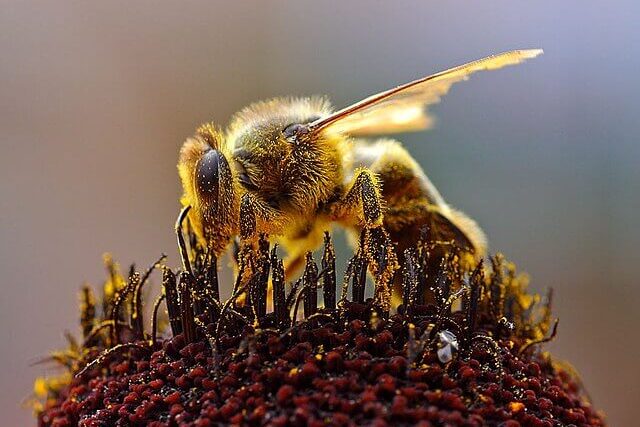
European bumblebee populations are facing a stark decline in the decades ahead.
This is primarily due to the dual challenges of climate change and habitat loss, caution scientists in a study published on Wednesday. Europe is home to 68 bumblebee species, the iconic black-and-yellow striped insects that are vital for pollinating crops and wild plants.
These bumblebees, accustomed to the cooler climates of the Northern Hemisphere, are grappling with the consequences of human-induced climate change, which is gradually threatening their existence, as outlined in the research published in the journal Nature.
A team of Belgian researchers gathered data from 46 bumblebee species found across Europe, assessing their populations both in the past (1901-1970) and the present (2001-2014), comprising over 400,000 distinct observations. This information was combined with the latest climate change modelling from the United Nations’ Intergovernmental Panel on Climate Change (IPCC) and forecasts concerning changes in land use.
In the worst-case scenario, the researchers discovered that “up to 75 percent of bumblebee species currently not considered threatened could experience a 30 percent reduction in their distribution areas by 2061-2080,” according to the lead author, Guillaume Ghisbain from the Universite Libre de Bruxelles.
This implies that most of the European bumblebee species that are currently categorised as “of least concern” on the International Union for Conservation of Nature’s (IUCN) list of threatened species could transition into the endangered category. Bumblebee species found in Arctic or alpine environments may face an even more dire situation, with an expected loss of 90 percent of their habitats.
Even the most common European bumblebee, Bombus terrestris, often seen pollinating flowers in backyards, is not immune to this anticipated decline.
By 2080, it “would see the limit of its geographical distribution, which currently borders the Sahara Desert, pull back to the Loire Valley” in central France, said co-author Pierre Rasmont of the University of Mons.
Land use patterns in the next half-century are partly responsible for the expected decrease.
“Intensive agriculture fragments habitats and relies on synthetic fertilisers which artificially enrich the soil with nitrogen,” Ghisbain said.
“However, bumblebees mainly consume plants which grow in soil poor in nitrogen,” such as clover, he added.
Prolonged and intensified droughts, a consequence of climate change, contribute to the loss of the plants that bumblebees rely on for food.
However, heatwaves exacerbated by global warming pose an even more substantial threat. Except for a few resilient species, bumblebees are especially vulnerable to extreme heat.
“We observed this in our laboratory one day when the air conditioning broke down — it was 40 degrees Celsius (104 Fahrenheit) and our colonies died in less than an hour,” Rasmont said.
“Some survive, but their sperm becomes deficient.”
In response, some bumblebees may seek refuge in cooler regions like Scandinavia. In fact, a few enterprising bees have already embarked on this journey northward.
The findings emphasize the urgent need to address climate change and habitat preservation to ensure the continued survival of these essential pollinators. The decline of bumblebee populations has far-reaching consequences for ecosystems, agriculture, and food production, making it a critical issue to be addressed.
“One day I was collecting bumblebees in northern Norway and suddenly, among the Arctic species, I came across a Bombus terrestris,” Rasmont said.
“It had leapt 800 kilometres (500 miles) north” of its natural habitat, he added.
——————————————————————————
At Natural World Fund, we are passionate about stopping the decline in our wildlife.
The decline in our wildlife is shocking and frightening. Without much more support, many of the animals we know and love will continue in their decline towards extinction.
When you help to restore a patch of degraded land through rewilding to forests, meadows, or wetlands, you have a massive impact on the biodiversity at a local level. You give animals a home and food that they otherwise would not have had, and it has a positive snowball effect on the food chain.
We are convinced that this is much better for the UK than growing lots of fast-growing coniferous trees, solely to remove carbon, that don’t actually help our animals to thrive.
This is why we stand for restoring nature in the UK through responsible rewilding. For us, it is the right thing to do. Let’s do what’s right for nature!
Donate today at https://naturalworldfund.com/ and join in the solution!

